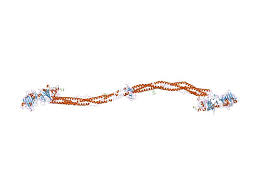Fibrinogen Activity Testing
A fibrinogen activity test is also known as Factor I Activity. This test is used to determine your blood level of fibrinogen. Factor I, also known as fibrinogen, is a blood plasma protein in the liver. Fibrinogen, or factor I, is one of 13 blood coagulation factors responsible for normal blood clotting.
Your body starts to clot when you begin to bleed. This causes the coagulation factors to mix and create a clot that will stop bleeding.
Clots won’t form if you don’t have enough fibrinogen or the cascade isn’t functioning properly. This can lead to excessive bleeding.
The purpose of the fibrinogen activity testing
You can order a fibrinogen activity test alone or as part of a series to determine the source of abnormal bleeding.
Your doctor may order a fibrinogen activation test if you have these symptoms.
- excessive bruising
- excessive bleeding from the gums
- Frequent nosebleeds
- bleeding in the gastrointestinal tract
- Urine containing blood
- Blood in the stool
- Bleeding in the head
- Fragmentation of the spleen
If you have, tests may be ordered.
- A prothrombin test or partial thromboplastin test may produce abnormal results.
- Disseminated intravascular coagulation symptoms, which are small clots that form throughout the body, are what you will notice.
- Fibrinolysis is a sign of abnormal fibrinogen breakdown.
- A possible acquired factor deficiency or inheritance that can affect how your blood clots
How does the test work?
This test does not require any special preparations. You may be advised by your doctor to discontinue taking certain medications before the test. If you are taking blood thinners, it is important to inform your doctor.
A healthcare professional will collect blood from your arm. The healthcare professional will clean the area with a swab of rubbing alcohol. They will then insert the needle into the vein and attach a tube to collect the blood.
Once enough blood has been drawn, the needle will be removed. After the blood has been drawn, the site will be wrapped with gauze pads and sent to a laboratory.
Understanding your test results
Normal results
The average blood level of fibrinogen is 2 to 4 grams per Liter.
Abnormal results
Abnormal results can be greater or less than the reference range. You can cause abnormal results by:
- excessive fibrinogen use
- Fibrinogen deficiency acquired or inherited
- Fibrinolysis with abnormal results
- hemorrhage
Types of fibrinogen deficiency
There are three fibrinogen deficiencies: afibrinogenemia (hypofibrinogenemia) and dysfibrinogenemia.
Afibrinogenemia
Fibrinogenemia refers to the complete absence of fibrinogen. 5 of 10 million suffer from this disorder. This disorder causes the greatest bleeding of all the fibrinogen deficiencies.
Hypofibrinogenemia
Hypofibrinogenemia refers to abnormally low-level fibrinogen. The test would indicate a level of between 0.2 to 0.8 grams per Liter in this instance. This deficiency type is more common than afibrinogenemia and can lead to mild to severe bleeding.
Dysfibrinogenemia
Dysfibrinogenemia is when fibrinogen levels are normal, but protein function is not optimal. This can be acquired or congenital. This form is more common.
Only 1 in 1,000,000 people is affected by dysfibrinogenemia. This condition can cause bleeding or thrombosis. More people experience bleeding.
What are your risks?
There are very few risks associated with blood tests. The following are some of the risks:
- There may be minor bruising around the needle site.
- Rarely may veins become enlarged after blood is drawn. This condition is called phlebitis and can be treated with a warm compress several days per day.
- If you have a bleeding disorder or are taking blood thinners like warfarin (Coumadin), or aspirin, you might experience persistent bleeding.
- Another possible complication is a puncture site infection. This can be seen as red swelling or pus formation.




